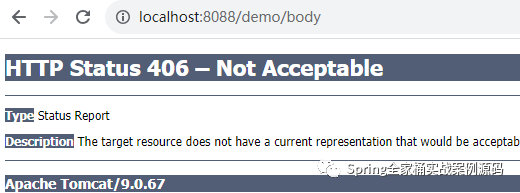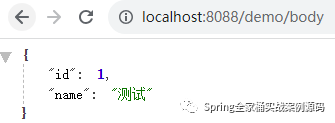环境:Spring5.3.23
1. 概述
Spring Boot是一个开源的非常流行的Java框架,由Pivotal团队开发,用于简化Spring应用程序的创建和部署。它遵循约定优于配置的原则,让开发者能够快速搭建和运行应用程序。Spring Boot通过自动配置和内置的依赖管理,简化了Spring应用程序的初始搭建以及开发过程。
Spring Boot为开发者提供了许多有用的功能,包括:
- 自动配置:Spring Boot会自动配置应用程序所需的各种组件,减少了手动配置的工作量。
- 嵌入式Web服务器:Spring Boot内置了Tomcat和Jetty等Web服务器,使得应用程序能够快速启动和运行。
- 约定优于配置的原则:Spring Boot遵循约定优于配置的原则,让开发者能够使用默认的配置,而无需过多地关注底层技术实现。
- 强大的依赖管理:Spring Boot提供了强大的依赖管理功能,能够自动管理应用程序所需的依赖项。
- 安全性:Spring Boot提供了安全性功能,包括身份验证和授权等,确保应用程序的安全性。
总之,Spring Boot是一个强大而简单的框架,它让开发者能够快速创建和运行应用程序。无论你是初学者还是有一定经验的开发者,Spring Boot都能够为你提供便利和高效的开发体验。在接下来的文章中,我们将通过自己动手写一个简单的Spring Boot应用程序来揭示这个过程原来如此简单。让我们一起开始这个项目吧!
提示:本篇文章需要你对Spring启动流程有一点的了解。
2. 动手实现
2.1 自定义Web类型的ApplicationContext
我们需要在自定义的ApplicationContext合适的方法中去启动内嵌的Tomcat。
public class PackAnnotationApplicationContext extends GenericWebApplicationContext {
public PackAnnotationApplicationContext() {
AnnotationConfigUtils.registerAnnotationConfigProcessors(this);
}
@Override
protected void onRefresh() {
super.onRefresh();
try {
// 创建WebServer
createWebServer() ;
} catch (Exception e) {
throw new ApplicationContextException("Unable to start web server", e) ;
}
}
@Override
protected void postProcessBeanFactory(ConfigurableListableBeanFactory beanFactory) {
beanFactory.addBeanPostProcessor(new PackServletContextAwareProcessor(this)) ;
super.postProcessBeanFactory(beanFactory);
}
private void createWebServer() throws Exception {
final int PORT = 8088 ;
Tomcat tomcat = new Tomcat() ;
// 获取Server节点 ---》 server.xml 【Server节点】
Server server = tomcat.getServer() ;
// 获取Service节点 ---》 server.xml 【Server---> Service节点】
Service service = server.findService("Tomcat") ;
// 配置Connector ---》 server.xml 【Server---> Service--->Connector节点】
Http11NioProtocol protocol = new Http11NioProtocol() ;
ThreadPoolExecutor executor = new ThreadPoolExecutor(1, 1, 60, TimeUnit.SECONDS, new LinkedBlockingQueue<>()) ;
// 配置Connector ---》 server.xml 【Server---> Service--->Executor节点】
protocol.setExecutor(executor) ;
protocol.setConnectionTimeout(20000);
Connector connector = new Connector(protocol) ;
// 设置访问端口
connector.setPort(PORT) ;
connector.setURIEncoding("UTF-8") ;
service.addConnector(connector) ;
// 配置Engine ---》 server.xml 【Server--->Service--->Engine】
StandardEngine engine = new StandardEngine() ;
// 这里的设置的默认host要和下面StandardHost设置的name一致
engine.setDefaultHost("localhost");
// 配置Engine ---》 server.xml 【Server--->Service--->Engine--->Host】
StandardHost host = new StandardHost() ;
host.setName("localhost") ;
host.setAppBase(System.getProperties().getProperty("user.home")) ;
engine.addChild(host) ;
service.setContainer(engine) ;
// 配置Context ---》 server.xml 【Server--->Service--->Engine--->Host--->Context】
StandardContext context = new StandardContext() ;
// 如果不配置这个,则会有这个错误:One or more components marked the context as not correctly configured
context.addLifecycleListener(new FixContextListener()) ;
// 访问路径
context.setPath("");
// Context节点添加到Host节点
host.addChild(context) ;
context.addServletContainerInitializer(new ServletContainerInitializer() {
@Override
public void onStartup(Set<Class<?>> c, ServletContext servletContext) throws ServletException {
// 这个的主要作用是,当一个Bean实现了ServletContextAware接口时,用来注入该ServletContext对象
PackAnnotationApplicationContext.this.setServletContext(servletContext) ;
DispatcherServlet dispatcherServlet = PackAnnotationApplicationContext.this.getBean(DispatcherServlet.class) ;
Dynamic dynamic = servletContext.addServlet("dispatcherServlet", dispatcherServlet) ;
dynamic.setLoadOnStartup(0) ;
dynamic.addMapping("/*") ;
}
}, null);
tomcat.start();
}
}如上,我们做了2件非常重要的事:1. 重写onRefresh方法。2. 创建内嵌的Tomcat服务。
2.2 自定义启动类程序PackSpringApplication
该类就是用来模拟SpringBoot中的SpringApplication对象。
public class PackSpringApplication {
private Class<?>[] primarySources ;
public PackSpringApplication(Class<?>[] primarySources) {
this.primarySources = primarySources ;
}
public ConfigurableApplicationContext run(String[] args) {
ConfigurableApplicationContext context = new PackAnnotationApplicationContext() ;
prepareEnvironment(context, args) ;
prepareContext(context) ;
refreshContex(context) ;
return context ;
}
// 刷新上下文,核心就是调用AbstractApplicationContext#refresh方法
private void refreshContex(ConfigurableApplicationContext context) {
context.refresh() ;
}
// 注备上下文环境,这里简单处理了命令行参数
private void prepareEnvironment(ConfigurableApplicationContext context, String[] args) {
ConfigurableEnvironment environment = new StandardEnvironment() ;
PropertySource<?> propertySource = new SimpleCommandLinePropertySource(args) ;
environment.getPropertySources().addFirst(propertySource) ;
context.setEnvironment(environment) ;
}
// 准备上下文
private void prepareContext(ConfigurableApplicationContext context) {
BeanDefinitionRegistry registry = getBeanDefinitionRegistry(context) ;
BeanNameGenerator generator = new DefaultBeanNameGenerator() ;
for (Class<?> clazz : primarySources) {
AbstractBeanDefinition definition = BeanDefinitionBuilder.genericBeanDefinition(clazz).getBeanDefinition() ;
registry.registerBeanDefinition(generator.generateBeanName(definition, registry), definition) ;
}
}
private BeanDefinitionRegistry getBeanDefinitionRegistry(ApplicationContext context) {
if (context instanceof BeanDefinitionRegistry) {
return (BeanDefinitionRegistry) context;
}
if (context instanceof AbstractApplicationContext) {
return (BeanDefinitionRegistry) ((AbstractApplicationContext) context).getBeanFactory();
}
throw new IllegalStateException("Could not locate BeanDefinitionRegistry");
}
public static ConfigurableApplicationContext run(Class<?> primarySource, String[] args) {
return new PackSpringApplication(new Class<?>[] {primarySource}).run(args) ;
}
}以上大致模拟的就是Spring Boot启动执行流程的步骤。
2.3 定义Web请求相关的配置
@Configuration
public class WebConfig {
@Bean
public DispatcherServlet dispatcherServlet() {
DispatcherServlet dispatcherServlet = new DispatcherServlet();
dispatcherServlet.setDispatchOptionsRequest(true) ;
dispatcherServlet.setDispatchTraceRequest(true) ;
dispatcherServlet.setThrowExceptionIfNoHandlerFound(true) ;
dispatcherServlet.setPublishEvents(true) ;
dispatcherServlet.setEnableLoggingRequestDetails(true) ;
return dispatcherServlet ;
}
}这里为了让你更加清晰的认识到SpringMVC相关的内容,就不使用@EnableWebMvc该注解。
有了上面的配置,接下来就可以写个测试程序进行测试
2.4 测试
测试Controller接口
@RestController
@RequestMapping("/demo")
public class DemoController {
@GetMapping("/index")
public Object index() {
return "index......" ;
}
@GetMapping("/body")
public User body() {
return new User(1, "测试") ;
}
}测试启动类
@Configuration
@ComponentScan({"com.pack.main.programmatic_tomcat_04"})
public class DemoApplication {
public static void main(String[] args) {
PackSpringApplication.run(DemoApplication.class, args) ;
}
}测试第一个接口:/demo/index
 图片
图片
测试第二个接口:/demo/body
 图片
图片
返回406状态码,程序出错了,这是因为在默认情况下,SpringMVC会使用系统默认提供的RequestMappingHandlerAdapter对象进行目标Controller的调用。但是默认的HandlerAdapter对象并不能处理返回值是这种对象类型。而默认支持支如下4中类型:
- ByteArrayHttpMessageConverter
- StringHttpMessageConverter
- SourceHttpMessageConverter
- AllEncompassingFormHttpMessageConverter
所以,这里我们需要自定义RequestMappingHandlerAdapter。在WebConfig中定义该Bean对象,设置
@Bean
public RequestMappingHandlerAdapter requestMappingHandlerAdapter() {
RequestMappingHandlerAdapter handlerAdapter = new RequestMappingHandlerAdapter() ;
List<HttpMessageConverter<?>> messageConverters = new ArrayList<>() ;
messageConverters.add(new StringHttpMessageConverter());
messageConverters.add(new MappingJackson2HttpMessageConverter()) ;
handlerAdapter.setMessageConverters(messageConverters) ;
return handlerAdapter ;
}再次测试
 图片
图片






























